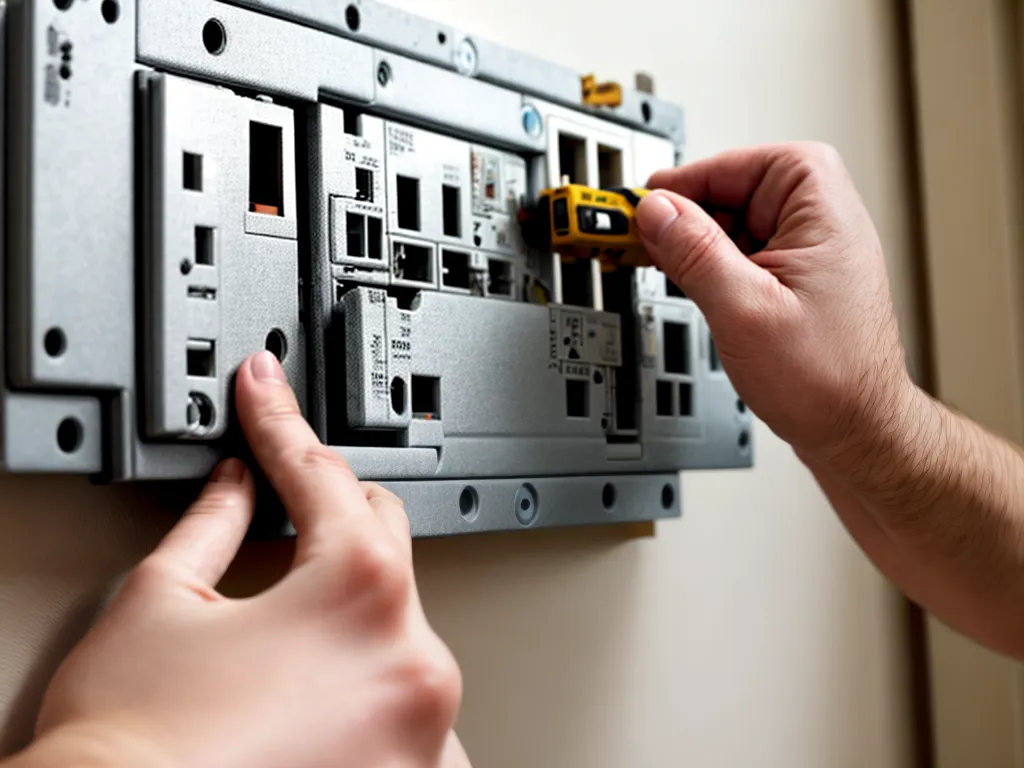
How to Rewire an Old House Safely
Introduction
Rewiring an old house can be a daunting task, but it is crucial for safety and taking advantage of modern amenities. Electrical systems degrade over time, and old wiring is a major fire hazard. However, with proper precautions, replacing the wiring in an old home is a manageable project for a dedicated DIYer. Here is a comprehensive guide to rewiring an old house safely.
Dangers of Old Wiring
Before beginning, it's important to understand why rewiring is necessary. Old wiring poses several safety risks:
-
Insulation around wires breaks down over time, exposing live wires and increasing fire risk. This can happen inside walls and is not visible.
-
Overloaded circuits from adding more devices can overheat wires and components. This stresses the system beyond what it was designed for.
-
Faulty connections like loose outlets or switches generate heat that damages wiring. These faulty points are fire starters.
-
Outdated wiring that lacks a ground wire gives no safe path for fault currents. This can lead to electric shock.
Real Life Example
For example, when we bought our 1890s Victorian, it still had original knob and tube wiring. Though we had no major issues, the insulation was deteriorating, and the system was overloaded. Rewiring enabled us to relieve strain on the electrical system and gain safety and convenience.
Preparation
Thorough preparation is key to a smooth rewiring project. Proper steps include:
Consult an Electrician
Though DIY rewiring is possible, consult a licensed electrician first. An expert can identify potential issues and provide a rewiring plan tailored to your home's needs. They can guide code compliance, wire sizing, and safety protocols.
Check Permits and Code
Verify you have proper permits for rewiring with your local building department. Research the current National Electric Code for minimum legal requirements. Common updates involve wiring gauge, grounding, GFCI outlets, and more.
Have Tools and Materials Ready
Assemble all needed materials like wire, boxes, outlets, breakers, and conduit before starting. Acquire necessary tools - strippers, cutters, drills, fish tape, voltage tester, ladder, etc. Preparation prevents delays mid-project.
Map the Current System
Diagram the existing wiring with circuits, wire runs, fuse/breaker box location, and device placements. This provides a reference as you rewire and helps avoid costly mistakes.
Rewiring Process Step-by-Step
Follow these steps to systematically rewire your home room-by-room:
Turn Off Power
Switch the main breaker off. Then turn off individual breakers and unplug devices. Verify power is off with a voltage tester. Lock boxes and post warning signs so power stays off.
Remove Old Wiring
Take down any accessible wiring like surface-mounted conduit. Determine wiring paths through walls and remove unnecessary wires. Check that remaining wiring is intact. Removing unused wires simplifies the new system.
Run New Wires
Run updated wiring following your permit and code. Use the right wire gauge for each circuit. Run all wires through protective conduit. Have an electrician connect the main service wire if replacing.
Update Electrical Boxes
Replace outdated fuse and breaker boxes with new load centers with ample circuit capacity. Install new junction boxes where wires branch off. Group similar lights and outlets on shared circuits.
Install Devices
Mount new outlets, switches and other devices in each room. Feed wires through holes drilled in framing and attach them securely to devices. Use nail guards to protect wires behind drywall.
Connect Circuits
Follow diagrams to connect all new circuits properly. Color code or label all wires clearly. Use wire nuts or crimp connectors to securely join wires. Ground all devices and boxes appropriately.
Finish and Test
Install cover plates, conduit covers and any fixtures. Turn power back on and methodically test each circuit using a voltage tester. Check that all wiring is energized and devices function properly before closing up walls.
Safety Tips
Rewiring must be done with great care and caution. Adhere to these safety best practices:
- Keep the power off and do not work on live wires
- Wear personal protective equipment like gloves and eye protection
- Only work on wiring you understand or consult an expert
- Double check connections before restoring power
- Have proper fire extinguishers on site just in case
- Keep flammable materials clear of work areas
Final Thoughts
Rewiring an old home is very involved but manageable with sufficient planning and attention to detail. Follow codes, work carefully, and get expert guidance when needed. New wiring enables you to update your home's electrical capacity and gain the safety, convenience and peace of mind that modern systems provide. With diligence and proper safety protocols, it is possible for many homeowners to rewire their old house successfully.